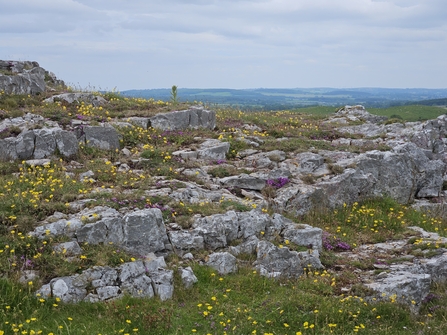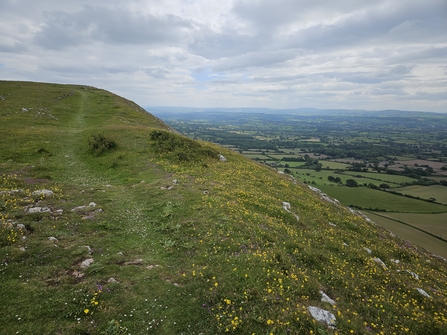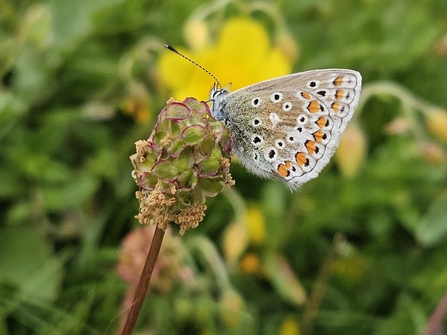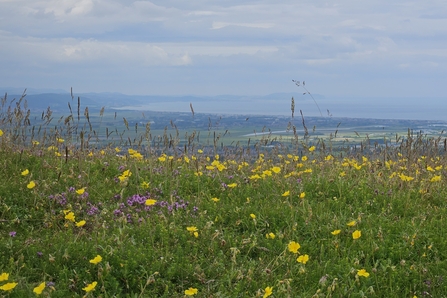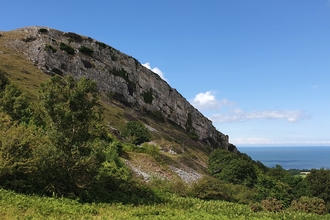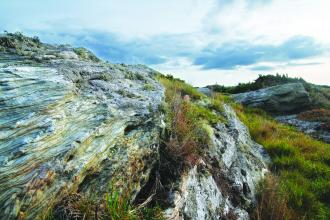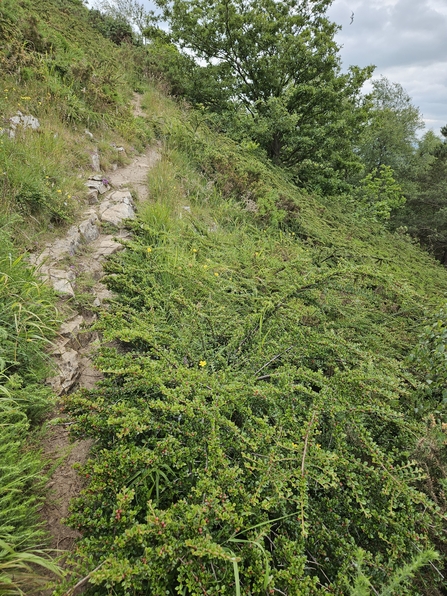
Invasive cotoneaster overtaking limestone habitat Moel Hiraddug ©Craig Wade NWWT
On a typical British summer’s day in June – overcast and windy, yet surprisingly warm – I followed the uphill path. It wasn’t long before I encountered dense green scrub on the slopes, dotted with native wildflowers competing for space. However, looking closer much of the landscape appeared dominated by one invasive species: cotoneaster (Cotoneaster horizontalis), which had aggressively overtaken this valuable habitat.
Invasive cotoneaster was introduced to the UK from Eastern Asia in the late 19th century as a garden plant, with over 100 cultivated varieties. It’s now recognised as one of the top ten species to negatively impact protected sites in Wales. Their berries are easily dispersed by birds contributing to its widespread distribution.
Cotoneaster species are listed on Schedule 9 of the UK Wildlife & Countryside Act as an invasive species. This doesn’t mean you can’t grow it in your garden, however please consider the potential impact on wildlife and choose alternatives if possible. Many organisations, including us at North Wales Wildlife Trust, are committed to the removal of this invasive plant in order to maintain the natural balance and diversity of local ecosystems.


